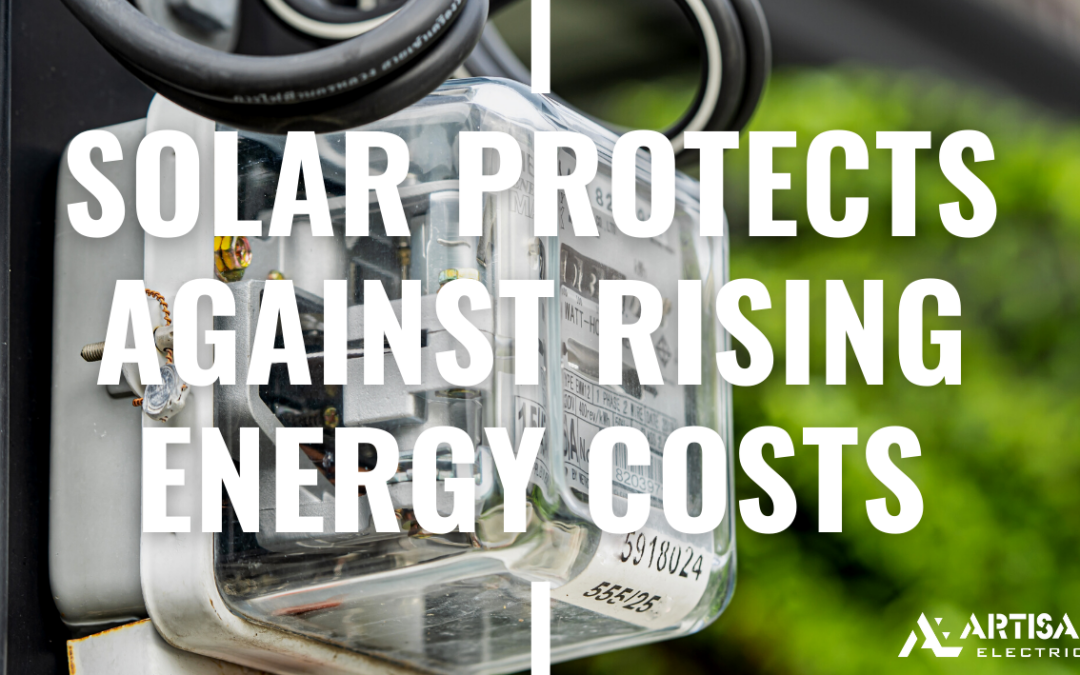Tired of rising electricity costs? Invest in a solar energy system now to protect yourself from future increases! With solar, you can say goodbye to hefty electric bills and hello to savings.
Electricity expenses can take a big chunk out of your monthly budget. But with a solar panel system, you’ll generate your own power for over 25 years! Even if you don’t produce all the energy you need, going solar still means significant savings on your utility bills.
Don’t let rising energy costs drain your wallet. Go solar and take control of your electricity expenses before the cost increases even more!
If you’ve noticed your electricity bill creeping up, you’re not alone. Power providers in the Seattle area have been raising rates, leading to increased costs for consumers. According to data from the U.S. Bureau of Labor Statistics, electricity rates in the Seattle metropolitan area have risen by 6.7% between April 2022 and April 2023. This represents an 11.4% increase in rates over the past five years and a significant 33.7% increase compared to a decade ago.
Various factors have contributed to the rate increases among Seattle-area power providers, including the cost of infrastructure and inflation.
To justify rate increases, utility providers must present their case to city councils and the Utilities and Transportation Commission. They must demonstrate that the cost of providing electricity has risen and explain the factors behind this increase. According to researchers from the University of Washington, the evidence suggests that providers have been successful in convincing regulators of the need for rate increases.
PSE, Washington’s largest utility provider, has attributed its rate increases to rising natural gas prices, state clean energy objectives, and investments in system reliability and safety. Complying with Washington’s Clean Energy Transformation Act, which aims to achieve greenhouse gas emission-free electricity by 2045, has been a significant driver of these increases.
Seattle’s City Light, approved a 4.5% rate increase for 2023 and 2024 as part of its strategic plan. The increase accounts for inflation, labor, and infrastructure costs. Similarly, Tacoma Power and the Snohomish Public Utility District have had to raise rates due to increased costs for equipment, fuel, personnel, and other expenses.
Understanding the factors behind these increases can help households make informed decisions and better manage their electricity expenses. With the ongoing push for green energy and the increasing demand for electricity, it’s no surprise that rates are on the rise. In fact, experts predict that this trend will continue in the years to come.
In June, PSE announced that the UTC (Utilities and Transportation Commission) had approved their green energy plan. By the end of 2025, PSE plans to meet the goal of having 63% renewable energy. Achieving this fully renewable grid will require delivering 15,000 megawatts of clean energy by 2045. This means implementing improvements such as residential solar panel systems, battery storage systems, wind turbines, and solar plants.
Currently, PSE’s supply portfolio consists of a mix of natural gas, hydroelectric, coal, wind, and unspecified sources. However, as they strive to meet their renewable energy goals, it’s likely that the reliance on these sources will shift. With rising electricity costs, investing in a Tesla powerwall plus could significantly lower your energy expenses.
But what does this mean for consumers?
Well, when PSE filed for a rate increase, the commission approved a portion of it. However, there is still a possibility of another increase in the future. So, if you’re a PSE consumer, be prepared for potential fluctuations in your electricity bill.
Seattle City Light has a portfolio that is predominantly made up of renewables such as hydro and wind energy. While they anticipate some cost pressures due to the rising prices of renewables, they have already factored this into their strategic plan.
As for Tacoma Power, rate increases will be considered in the spring of 2024. If proposed, these increases will go through the necessary channels for approval. Consumers will have to wait until the fall of next year to find out if they will be facing higher electricity costs.
Overall, experts from the University of Washington predict that rates will continue to rise in the coming years. The increased demand for electricity, especially due to the growing popularity of electric vehicles, will require significant investments in infrastructure and renewable energy sources. And of course, these investments will have to be funded by consumers through higher rates.
So, what can you do?
Going solar drastically reduces or even eliminates your electric bills. Electricity costs can make up a large portion of your monthly expenses. With a solar panel system, you’ll generate free power for your system’s entire 25+ year lifespan. Even if you don’t produce 100 percent of the energy you consume, solar still reduces your utility bills, meaning you’ll save a lot of money. Going solar helps avoid rising energy costs. Every year, electricity prices continue to increase throughout the country. By investing in a solar energy system now, you can lock-in the price you pay for electricity today in order to protect against future increases in electricity costs.

